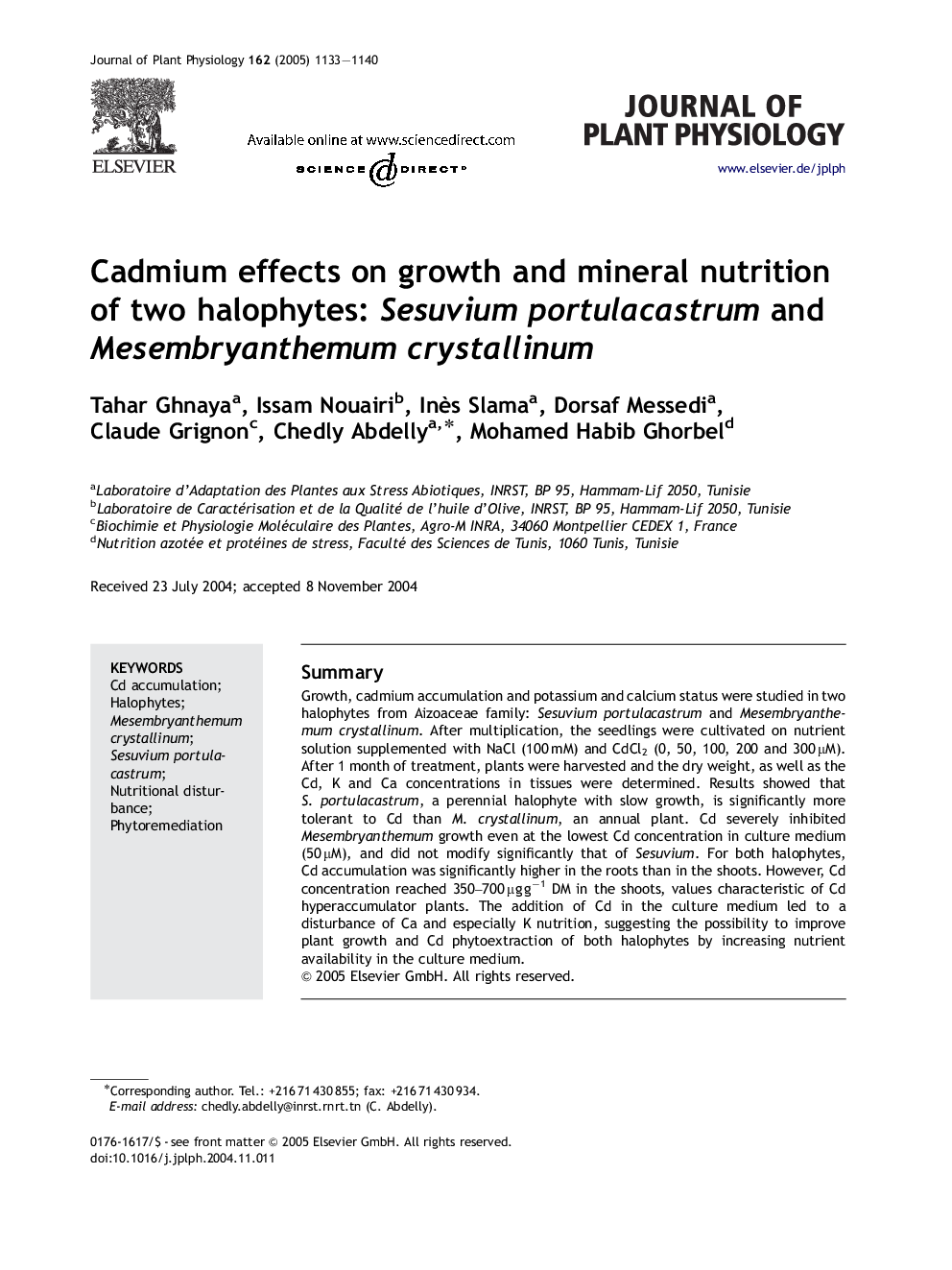| Article ID | Journal | Published Year | Pages | File Type |
|---|---|---|---|---|
| 10876968 | Journal of Plant Physiology | 2005 | 8 Pages |
Abstract
Growth, cadmium accumulation and potassium and calcium status were studied in two halophytes from Aizoaceae family: Sesuvium portulacastrum and Mesembryanthemum crystallinum. After multiplication, the seedlings were cultivated on nutrient solution supplemented with NaCl (100 mM) and CdCl2 (0, 50, 100, 200 and 300 μM). After 1 month of treatment, plants were harvested and the dry weight, as well as the Cd, K and Ca concentrations in tissues were determined. Results showed that S. portulacastrum, a perennial halophyte with slow growth, is significantly more tolerant to Cd than M. crystallinum, an annual plant. Cd severely inhibited Mesembryanthemum growth even at the lowest Cd concentration in culture medium (50 μM), and did not modify significantly that of Sesuvium. For both halophytes, Cd accumulation was significantly higher in the roots than in the shoots. However, Cd concentration reached 350-700 μg gâ1 DM in the shoots, values characteristic of Cd hyperaccumulator plants. The addition of Cd in the culture medium led to a disturbance of Ca and especially K nutrition, suggesting the possibility to improve plant growth and Cd phytoextraction of both halophytes by increasing nutrient availability in the culture medium.
Keywords
Related Topics
Life Sciences
Agricultural and Biological Sciences
Agronomy and Crop Science
Authors
Tahar Ghnaya, Issam Nouairi, Inès Slama, Dorsaf Messedi, Claude Grignon, Chedly Abdelly, Mohamed Habib Ghorbel,
